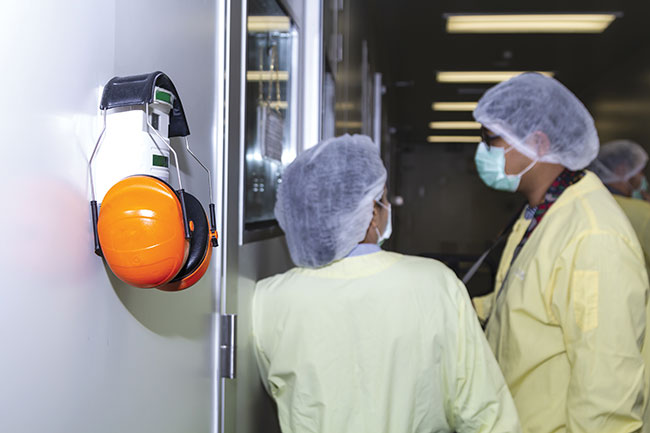
Study: Salmon farm workers are at a much higher risk of harmful noise
February 28, 2022
By
Liza Mayer
Subject is vastly understudied among health hazards in the field of aquaculture
 Site managers have taken steps to reduce noise exposures by providing employees with some form of hearing protection, but not everyone uses them, the authors said Photo:©JRC_Stop Motion/Adobe Stock
Site managers have taken steps to reduce noise exposures by providing employees with some form of hearing protection, but not everyone uses them, the authors said Photo:©JRC_Stop Motion/Adobe Stock Researchers who studied noise exposure in Canada’s salmonid aquaculture industry have found that salmon farm workers are at a much higher risk of excessive noise exposure than employees at other types of facilities due to the tasks performed and the equipment used.
Data was collected from a salmon hatchery, a salmon R&D facility, a laboratory and a salmon farm.
“Noise levels at the salmon farm are significantly higher than those observed at the other three facilities because workers were required to perform all tasks near machinery due to limited space onboard the vessels, and the equipment used to feed the salmon was installed on the vessel’s main deck where the personnel was working,” said researchers Jonathan K. Stone and Lorenzo Moro of the Memorial University of Newfoundland.
They found that hand-guided feed blowers and generators were the biggest sources of noise. The hand-guided feed blower, which is used for six hours a day by each labourer, emits noise levels upwards of 90.2 dB(A), slightly higher than the maximum permitted exposure level of 87 dB9(A) for eight hours per Canadian federal regulations and 87 dB9(A) in British Columbia.
The authors recommend that employees wear the appropriate hearing protection during certain tasks or within the vicinity of noisy machinery on site.
Except for the laboratory, three of the facilities have actively taken steps to reduce noise exposures, but not everyone use the hearing protection even if they were available, said the authors.
They further recommend that generators and compressors be properly isolated via resilient mounts and enclosed in insulated spaces since they are common sources of noise in all the facilities. All doorways accessing rooms with this equipment should always be kept closed; salmon farms should consider switching to automatic feed blowers so a worker doesn’t have to be nearby; and vessels used in salmon farms should have the engine room properly insulated when equipped with an inboard engine.
The research adds to what little information there is about noise exposures of workers in salmonid-based facilities in aquaculture. Aquaculture occupational health and safety is understudied in Canada, much like in the rest of the world, but occupational noise exposure is even more so. Existing studies focus on physical hazards such as slips, trips and falls or chemical hazards related to fish vaccines and fish care, said the researchers.
Advertisement
- NOAA releases new federal permitting guide
- Maine Aquaculture Association’s manual to guide producers through distribution challenge areas





